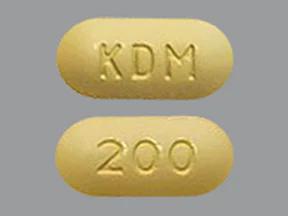Belumosudil Side Effects
Medically reviewed by Drugs.com. Last updated on Apr 14, 2024.
Applies to belumosudil: oral tablet.
Serious side effects of Belumosudil
Along with its needed effects, belumosudil may cause some unwanted effects. Although not all of these side effects may occur, if they do occur they may need medical attention.
Check with your doctor immediately if any of the following side effects occur while taking belumosudil:
More common
- Black, tarry stools
- bladder pain
- bloody nose
- bloody or cloudy urine
- bluish lips or skin
- blurred vision
- body aches or pain
- burning, dry or itching eyes
- chest pain or tightness
- chills
- collection of blood under the skin
- confusion
- cough
- cough producing mucus
- deep, dark purple bruise
- diarrhea
- difficult, burning, or painful urination
- discharge, excessive tearing
- dizziness
- ear congestion
- fainting
- fast heartbeat
- fever
- frequent urge to urinate
- headache
- itching, pain, redness, or swelling
- loss of appetite
- loss of voice
- lower back or side pain
- muscle or bone pain
- nausea
- nervousness
- pain or tenderness around the eyes and cheekbones
- pale skin
- pounding in the ears
- redness, pain, swelling of the eye, eyelid, or inner lining of the eyelid
- sneezing
- sore throat
- stomach pain
- stuffy or runny nose
- swelling of the hands, ankles, feet, or lower legs
- swelling or puffiness of the face
- trouble breathing
- unusual bleeding or bruising
- unusual tiredness or weakness
- watery and severe diarrhea, which may also be bloody
Other side effects of Belumosudil
Some side effects of belumosudil may occur that usually do not need medical attention. These side effects may go away during treatment as your body adjusts to the medicine. Also, your health care professional may be able to tell you about ways to prevent or reduce some of these side effects.
Check with your health care professional if any of the following side effects continue or are bothersome or if you have any questions about them:
More common
- Cracks in the skin
- difficulty in moving
- difficulty swallowing
- lack or loss of strength
- loss of heat from the body
- muscle pain, stiffness, or spasm
- pain in the joints
- rash with flat lesions or small raised lesions on the skin
- red, swollen, or scaly skin
For Healthcare Professionals
Applies to belumosudil: oral tablet.
General
The most common adverse reactions occurring in 20% or more patients, including laboratory abnormalities, were infections, asthenia, nausea, diarrhea, dyspnea, cough, edema, hemorrhage, abdominal pain, musculoskeletal pain, headache, decreased phosphate, increased gamma-glutamyl transferase, decreased lymphocytes, and hypertension.[Ref]
Cardiovascular
Very common (10% or more): Hypertension (up to 21%)[Ref]
Dermatologic
Very common (10% or more): Rash (up to 12%), pruritus/generalized pruritus (11%)[Ref]
Rash includes maculopapular rash, erythematous rash, generalized rash, and exfoliative dermatitis.[Ref]
Gastrointestinal
Very common (10% or more): Nausea/vomiting (up to 42%), diarrhea (up to 35%), upper/lower abdominal pain (up to 22%), dysphasia (up to 16%)
Common (1% to 10%): Constipation[Ref]
Hematologic
Very common (10% or more): Hemorrhage (up to 23%), decreased neutrophil count (up to 83%), decreased platelets (up to 82%), decreased hemoglobin (up to 79%), decreased lymphocytes (up to 62%)[Ref]
Hemorrhage includes contusion, hematoma, epistaxis, increased tendency to bruise, conjunctival hemorrhage, hematochezia, mouth hemorrhage, catheter site hemorrhage, hematuria, hemothorax, and purpura.[Ref]
Hepatic
Very common (10% or more): Increased gamma-glutamyl transferase (up to 47%)
Common (1% to 10%): Increased AST, increased ALT[Ref]
Metabolic
Very common (10% or more): Decreased appetite (up to 17%)[Ref]
Musculoskeletal
Very common (10% or more): Musculoskeletal pain (up to 22%), arthralgia (up to 15%)
Common (1% to 10%): Muscle spasm[Ref]
Musculoskeletal pain includes pain in extremity, back pain, flank pain, limb discomfort, musculoskeletal chest pain, and neck pain.[Ref]
Nervous system
Very common (10% or more): Headache/migraine (up to 21%)
Common (1% to 10%): Peripheral neuropathy, dizziness[Ref]
Other
Very common (10% or more): Decreased calcium (up to 82%), increased potassium (up to 82%), increased alkaline phosphatase (up to 80%), decreased phosphate (up to 76%), asthenia/fatigue/malaise (up to 46%), edema (up to 27%), pyrexia (up to 18%), infection (unspecified pathogen) (up to 53%), viral infection (up to 19%), bacterial infection (up to 16%)[Ref]
Edema includes peripheral edema, generalized edema, face edema, and localized edema.
Infection with unspecified pathogens includes acute sinusitis, device-related infection, ear infection, folliculitis, gastroenteritis, gastrointestinal infection, hordeolum, infectious colitis, lung infection, skin infection, tooth infection, urinary tract infection, wound infection, upper respiratory tract infection, pneumonia, conjunctivitis, sinusitis, respiratory tract infection, bronchitis, sepsis, and septic shock.
Viral infection includes influenza, rhinovirus infection, gastroenteritis viral, viral upper respiratory tract infection, bronchitis viral, Epstein-Barr viremia, Epstein-Barr virus infection, parainfluenza virus infection, and Varicella zoster virus infection.
Bacterial infection includes cellulitis, Helicobacter infection, Staphylococcal bacteremia, catheter site cellulitis, Clostridium difficile colitis, Escherichia urinary tract infection, gastroenteritis Escherichia coli, Pseudomonas infection, and bacterial urinary tract infection.[Ref]
Renal
Very common (10% or more): Increased creatinine (up to 83%)[Ref]
Respiratory
Very common (10% or more): Dyspnea (up to 33%), cough/productive cough (up to 30%), nasal congestion (up to 12%)[Ref]
Dyspnea includes exertional dyspnea, apnea, orthopnea, and sleep apnea syndrome.[Ref]
More about belumosudil
- Check interactions
- Compare alternatives
- Dosage information
- During pregnancy
- Drug class: selective immunosuppressants
- En español
Patient resources
Other brands
Professional resources
Other brands
Related treatment guides
References
1. (2021) "Product Information. Rezurock (belumosudil)." Kadmon Pharmaceuticals
2. (2024) "Product Information. Rezurock (belumosudil)." Sanofi
3. (2024) "Product Information. Rezurock (belumosudil)." Kadmon Pharmaceuticals, 11/2023
Further information
Always consult your healthcare provider to ensure the information displayed on this page applies to your personal circumstances.
Some side effects may not be reported. You may report them to the FDA.

